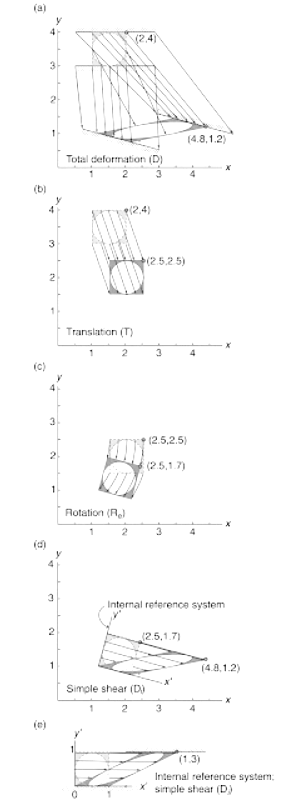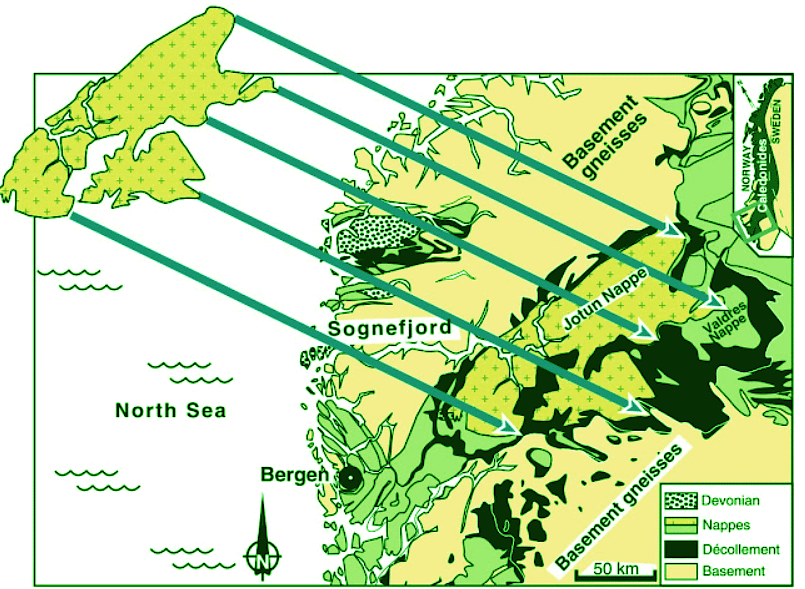Deformation | Science for ACT PDF Download
Introduction
- The term "deformation" is utilized in various contexts within structural geology and can have different interpretations depending on the situation and the individuals involved. Generally, in the field of geology, deformation refers to the alteration or distortion (strain) exhibited by a rock mass. Essentially, it denotes a change in form or shape, which is the literal meaning of the word.
- However, it's important to note that during deformation, rock masses can undergo rigid movements such as translation or rotation, without experiencing any internal changes in shape. For example, fault blocks may shift during deformation without undergoing internal distortion. Some structural geologists advocate for including such rigid displacements within the concept of deformation, referring to them as rigid body deformation, as opposed to non-rigid body deformation, which involves strain or distortion.
- Deformation encompasses the transformation from an initial to a final geometry through a combination of rigid body translation, rigid body rotation, strain (distortion), and/or changes in volume.

It is beneficial to conceptualize a rock or rock unit as a continuum of particles. Deformation involves analyzing the positions of particles before and after undergoing deformation, and connecting these positions with vectors. These vectors, known as displacement vectors, form a field referred to as the displacement field. Displacement vectors, as illustrated in the central column of Figure 1, simply establish a link between the undeformed and deformed states, without providing information on the actual movement of particles during deformation. The trajectory followed by each particle throughout the deformation process is termed a particle path, depicted by green arrows in the right column of Figure 1. When specifically discussing the ongoing changes occurring during deformation, it is more appropriate to use terms like deformation history or progressive deformation.
Components of Deformation

The displacement field can be decomposed into various components, depending on the purpose of the decomposition. The classic way of decomposing it is by separating rigid body deformation in the form of rigid translation and rotation from change in shape and volume. In Fig. 2 the translation component is shown in (b), the rotation component in (c) and the rest (the strain) in (d). Let us have a closer look at these expressions.
Translation
- Deformation can occur in various ways, with translation, rotation, strain, volume change, and their combinations representing its components.
- Translation involves moving every particle in the rock uniformly in the same direction and distance. The displacement field for translation consists of parallel vectors of equal length. This type of deformation can be substantial, as seen in thrust nappes where detached slices of rocks have been transported over significant distances, such as the Jotun Nappe in the Scandinavian Caledonides. In some cases, rigid translation can occur without any internal change in shape.
- Rotation refers to the rigid rotation of the entire deformed rock volume being studied. It entails a uniform physical rotation of a rock volume relative to an external coordinate system. Large-scale rotations often occur about vertical axes, while fault blocks in extensional settings may rotate around horizontal axes.
- Strain, or distortion, represents non-rigid deformation and involves any change in shape, with or without a change in volume. Strain implies that particles in a rock have shifted positions relative to each other. While translation and rotation can occur in any sequence, strain accumulates progressively. However, it's important to note that we can only observe strain directly and not the actual translation or rotation.
- Volume change, also known as dilation, refers to the expansion or contraction of a rock volume, regardless of its shape remaining unchanged. It is considered a special type of strain called volumetric strain and is crucial for a comprehensive description of deformation.
- A system of reference must be chosen for studying deformation, similar to selecting a reference point when observing a ship from a dock. Geologists often orient the coordinate system along significant geological structures to simplify analysis, eliminating translation and rigid rotation.
- Deformation reflects the difference between the deformed and undeformed states, without providing information about the specific processes that occurred during deformation. Homogeneous deformation occurs when the applied deformation is consistent throughout the rock volume, while heterogeneous deformation entails variations in deformation within the volume.

- For homogeneous deformation, initially straight and parallel lines maintain their straightness and parallelism after deformation, as depicted in Fig. 4. Additionally, the strain and volume/area change remain constant throughout the rock volume under consideration. If these parameters vary, then the deformation is deemed heterogeneous (inhomogeneous). This implies that objects with identical initial shapes and orientations will retain identical shapes and orientations after deformation. However, it's important to note that the initial and final shapes and orientations generally differ. Even if two objects have the same shapes but different orientations before deformation, they will likely have different shapes after deformation, illustrating the strain imposed on the rock.
- Homogeneous deformation preserves the straightness of lines, parallelism of lines, and the shape and orientation of objects. During homogeneous deformation, a circle transforms into an ellipse, with the ellipticity (ratio between the long and short axes of the ellipse) determined by the type and intensity of the deformation. Mathematically, this corresponds to homogeneous deformation being a linear transformation, describable by a set of first-order equations (three in three dimensions) or, more simply, by a deformation matrix.

Before looking at the deformation matrix, the point made in Fig. 5 must be emphasized:
A deformation that is homogeneous on one scale may be considered heterogeneous on a different scale.

A common illustration of heterogeneous strain is the variation observed from the edge to the center of a shear zone. While strain is heterogeneous on this broader scale, it can be broken down into smaller elements or zones where strain is relatively uniform. Another instance is depicted in Fig. 6, where a rock mass is intersected by faults. At a larger scale, the deformation may appear homogeneous since the faults' disruptions are relatively minor. However, at a finer scale, these discontinuities become more noticeable, necessitating consideration of the deformation as heterogeneous.
|
485 videos|520 docs|337 tests
|
FAQs on Deformation - Science for ACT
| 1. What is deformation in materials science? |  |
| 2. What are the common components of deformation in materials? |  |
| 3. How does translation deformation differ from other types of deformation? |  |
| 4. What factors influence the extent of deformation in materials? |  |
| 5. Can deformation in materials be reversed? |  |
















